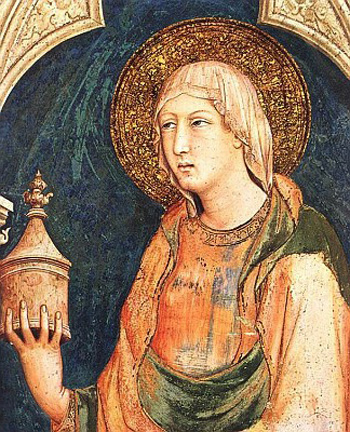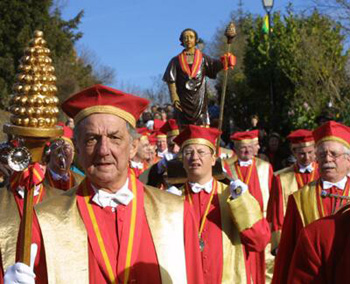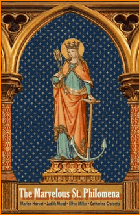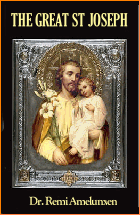Symbolism
 |
 |
 |
 |
 |
 |
 |
Every Guild Had Its Patron Saint
It is in fact that at the end of the Middle Ages a special emblem for each saint was firmly established in the customs of the people.
 Nothing contributed more to the preservation and the diffusion of these signs than the craft guilds. All the guilds, as we have seen, had their patrons. The reasons which determined the guilds in the choice of a saint were often very simple.
Nothing contributed more to the preservation and the diffusion of these signs than the craft guilds. All the guilds, as we have seen, had their patrons. The reasons which determined the guilds in the choice of a saint were often very simple.
St. Eloy, one of best craftsman of the 7th century, was naturally the patron of goldsmiths, St. Crispin of shoemakers. But the reasons are not always so obvious. The carpenters, for instance, whose business sometimes was to make the tabernacle in which the ciborium was placed, chose St. Anne as patron, on the grounds that she had made the first of tabernacles, that is to say the Holy Virgin who bore within her the Son of God. The sawyers celebrated the feast of the Visitation, because on that day the Virgin and St. Elizabeth bent towards one another as do two workmen when using a saw.
Some of the ideas that governed the choice are not lacking in beauty and a sort of touching simplicity. The porters recognized St. Christopher as patron because he had borne the child Christ on his shoulders. The pinmakers chose the Nativity as their guild festival, because it was said that during the Christmas night the Virgin had fastened the Child's swaddling clothes with pins after the manner of nurses.
 Servants invoked the active and humble Martha. Perfume sellers chose Mary Magdalene who had poured a vase of precious ointment over the Savior's feet. Innkeepers took as patron St. Julian who had not refused to receive even the lepers.
Servants invoked the active and humble Martha. Perfume sellers chose Mary Magdalene who had poured a vase of precious ointment over the Savior's feet. Innkeepers took as patron St. Julian who had not refused to receive even the lepers.
In other cases the connection is not in the best taste. St. Bartholomew, who was flayed alive, was the patron of the tanners, and St. John, who was plunged in boiling oil, was the patron of the chandlers.
Some of these analogies are based on bad puns. A play on words made St. Clare the patroness of glassmakers. Although no episode in his life qualified him for it, St. Vincent was the chosen patron of the vine dressers because V was the first letter of his name.
Childish or touching, the cult of the patron saint had, as we see, its roots deep in the people's life. The demand of the guilds for the images of their protectors had its influence on art, and some of the attributes seen in their hands find justification in their position as patron rather than in their lives.
 St. Honoré carries an oven-shovel solely because he was the chosen patron of the bakers. St. Vincent's bunch of grapes, seen on tokens issued by the guild of vine-dressers in the late Middle Ages, has a similar explanation. It would be usefull to seek the interpretation of such emblems in the Golden Legend.
St. Honoré carries an oven-shovel solely because he was the chosen patron of the bakers. St. Vincent's bunch of grapes, seen on tokens issued by the guild of vine-dressers in the late Middle Ages, has a similar explanation. It would be usefull to seek the interpretation of such emblems in the Golden Legend.
The guilds did not always suggest new attributes to the artists, but they insisted on a clear rendering of the established ones. The carders, whose patron was St. Blaise, desired that the iron comb, which had been his instrument of torture should be clearly distinguishable in his hands. An image of St. Eloy without his pincers would have found no favor with the goldsmiths.
In this way the craft guilds contributed towards the custom of representing the saints with some characteristic and permanent emblem.


St Crispin, Patron Saint of the shoemakers, cutting the leather to be used in a shoe
St. Eloy, one of best craftsman of the 7th century, was naturally the patron of goldsmiths, St. Crispin of shoemakers. But the reasons are not always so obvious. The carpenters, for instance, whose business sometimes was to make the tabernacle in which the ciborium was placed, chose St. Anne as patron, on the grounds that she had made the first of tabernacles, that is to say the Holy Virgin who bore within her the Son of God. The sawyers celebrated the feast of the Visitation, because on that day the Virgin and St. Elizabeth bent towards one another as do two workmen when using a saw.
Some of the ideas that governed the choice are not lacking in beauty and a sort of touching simplicity. The porters recognized St. Christopher as patron because he had borne the child Christ on his shoulders. The pinmakers chose the Nativity as their guild festival, because it was said that during the Christmas night the Virgin had fastened the Child's swaddling clothes with pins after the manner of nurses.

St Mary Magdalene, Patron Saint of perfume makers, with the perfume she poured on the feet of Our Lord
In other cases the connection is not in the best taste. St. Bartholomew, who was flayed alive, was the patron of the tanners, and St. John, who was plunged in boiling oil, was the patron of the chandlers.
Some of these analogies are based on bad puns. A play on words made St. Clare the patroness of glassmakers. Although no episode in his life qualified him for it, St. Vincent was the chosen patron of the vine dressers because V was the first letter of his name.
Childish or touching, the cult of the patron saint had, as we see, its roots deep in the people's life. The demand of the guilds for the images of their protectors had its influence on art, and some of the attributes seen in their hands find justification in their position as patron rather than in their lives.

To this day the winemakers of France carry the statue of St. Vincent in their annual ceremonies
The guilds did not always suggest new attributes to the artists, but they insisted on a clear rendering of the established ones. The carders, whose patron was St. Blaise, desired that the iron comb, which had been his instrument of torture should be clearly distinguishable in his hands. An image of St. Eloy without his pincers would have found no favor with the goldsmiths.
In this way the craft guilds contributed towards the custom of representing the saints with some characteristic and permanent emblem.

Selected from Emile Mâle,
The Gothic Image: Religious Art in France of the 13th Century.
NY: Harper & Brothers, pp 292-293.
Posted August 23, 2014
The Gothic Image: Religious Art in France of the 13th Century.
NY: Harper & Brothers, pp 292-293.
Posted August 23, 2014
______________________
______________________











